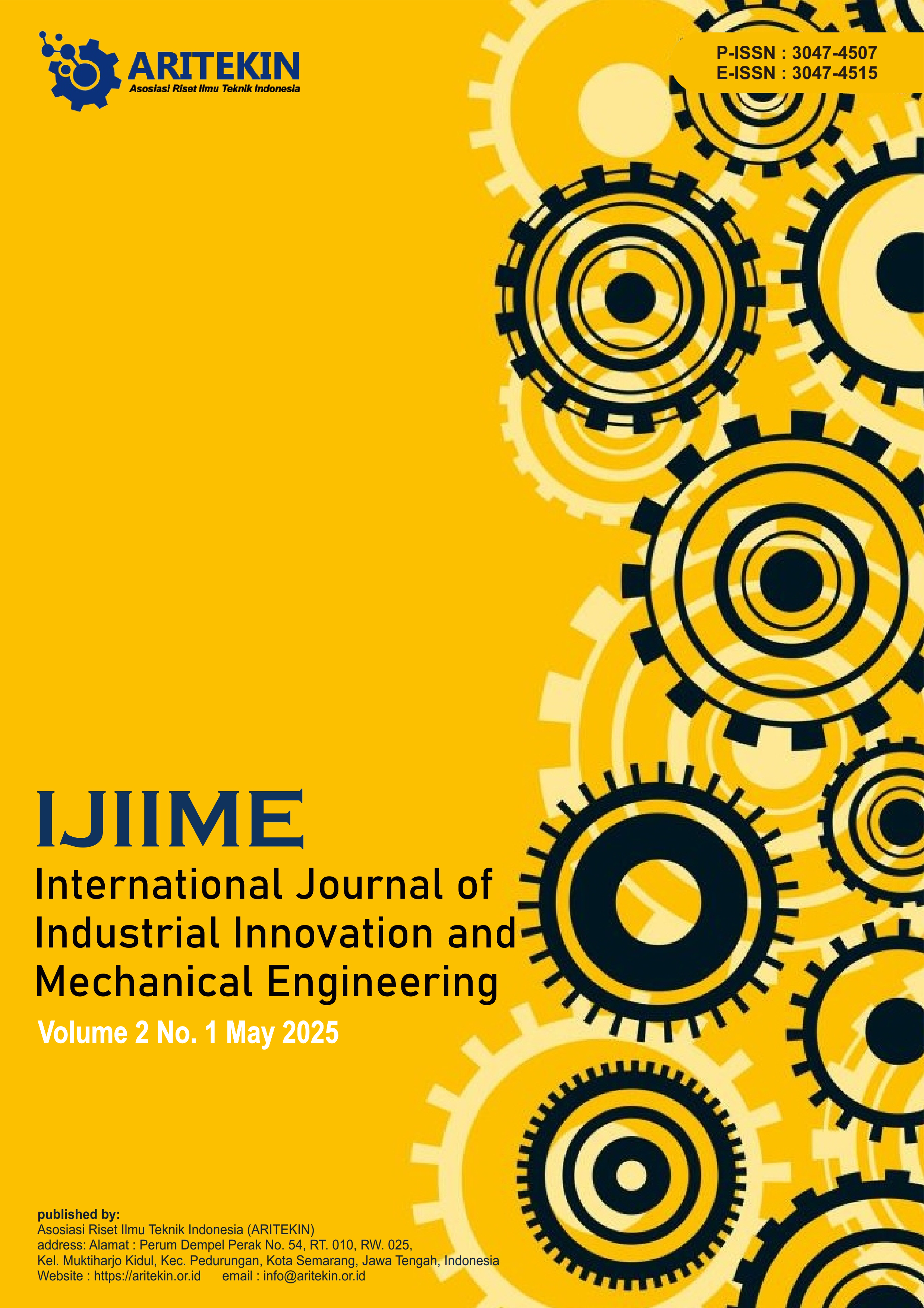Digital Transformation of it Governance at The Department of Community and Village Empowerment, Population and Civil Registration of North Sumatra Province
DOI:
https://doi.org/10.61132/ijiime.v2i2.280Keywords:
COBIT 2019, Digital Transformation, IT Governance, Information Technology, Public ServiceAbstract
Digital transformation in Information Technology (IT) governance has become a crucial aspect in improving the efficiency of public services, particularly within the Department of Community and Village Empowerment, Population, and Civil Registration of North Sumatra Province. This study aims to analyze the implementation of digital transformation in IT governance using the COBIT 2019 framework. The research method includes the analysis of regulations, the role of IT, procurement models, implementation methods, and technology adoption strategies applied by the department. The findings show that IT implementation is predominantly strategic in nature, supporting the digitization of population services and enhancing data transparency. The IT procurement model comprises a combination of outsourcing (30%), cloud computing (30%), and insourcing (40%) to balance efficiency and system control. Agile methodology is the most dominant implementation method (50%), followed by DevOps (35%) for maintenance and traditional approaches (15%) for more structured projects. The department primarily adopts a "follower" technology adoption strategy (75%), reflecting a selective approach to digital innovation. Based on COBIT 2019 evaluation, the BAI (Build, Acquire, and Implement) domain is the main focus, with high scores in solution identification and improvement management (90) and change management (100), indicating the department’s readiness to adopt digital systems. However, challenges remain in information security, inter-agency data integration, and human resource readiness. The digital transformation of IT governance at the department has been systematically implemented, supporting the improvement of population service efficiency. Enhancements in security, infrastructure, and the strengthening of IT governance policies are necessary to optimize and sustain digital transformation implementation.
References
Afdhani, R., & Soewito, B. (2024). Perancangan Tata Kelola TI Menggunakan Framework COBIT 2019 pada Pusat Data dan Informasi Kementerian. Jurnal Tata Kelola Dan Kerangka Kerja Teknologi Informasi, 10(1), 22–33.
Aryatama, S., Miswan, M., Fahriyah, F., Pribadi, T., & Suacana, I. W. G. (2024). Enhancing Governance Efficiency through Digital Transformation in Public Services: Lessons from Global Practices. Global International Journal of Innovative Research, 2(5), 1019–1027. https://doi.org/10.59613/global.v2i5.171
Correia, A., & Água, P. B. (2021). A Corporate Governance Perspective on IT Governance. Corporate Governance: A Search for Emerging Trends in the Pandemic Times, 107–114. https://doi.org/10.22495/cgsetpt19
Dhandar, K. A. (2024). E-Government and Digital Transformation: Investigate the implementation and impact of e-government initiatives on public service delivery, citizen engagement, and administrative efficiency. Gurukul International Multidisciplinary Research Journal. https://doi.org/10.69758/GIMRJ/2408II05V12P0001
Dharmaa, I. G. M. S., Sasmitaa, I. G. M. A., & Putra, I. M. S. (2021). Evaluasi dan Implementasi Tata Kelola TI Menggunakan COBIT 2019 (Studi Kasus pada Dinas Kependudukan dan Pencatatan Sipil Kabupaten Tabanan). Jurnal Ilmiah Teknologi Dan Komputer, 2(2).
Gouwnalan, S. K., & Tanaamah, A. R. (2023). Penggunaan Framework Cobit 2019 dalam Evaluasi Tata Kelola Teknologi Informasi. Jurnal Teknik Informatika Dan Sistem Informasi, 9(2). https://doi.org/10.28932/jutisi.v9i2.6373
Huiqian Li. (2024). Smart Practice of Integrating Administrative Management and Human Resources of Chinese Local Governments under the Background of Digital Transformation. Lex Localis - Journal of Local Self-Government, 22(3), 209–227. https://doi.org/10.52152/22.3.209-227(2024)
Idrus, S. H., Sumartono, E., Wartono, W., Suharto, S., & Syahriar, I. (2024). Harnessing Digital Transformation for Improved Public Service Delivery: Lessons from Global Administrative Practices. Join: Journal of Social Science, 1(3), 257–269. https://doi.org/10.59613/k8s6s859
Intan, A., Setiawan, A., & Maengkom, M. R. (2023). Studi Literatur terhadap Peran dan Manfaat COBIT 2019 dalam Tata Kelola Teknologi Informasi di Indonesia. INNOVATIVE: Journal Of Social Science Research, 3(5), 1681–1692.
Luna-Reyes, L., Juiz, C., Gutierrez-Martinez, I., & Duhamel, F. B. (2020). Exploring the Relationships between Dynamic Capabilities and IT Governance. Transforming Government: People, Process and Policy, 14(2), 149–169. https://doi.org/10.1108/TG-09-2019-0092
Mathase, E., Phahlane, D. M., & Ochara, P. N. M. (2019). Review of IT Governance Frameworks Implementation in the Context of the South African Public Sector. 2019 Open Innovations (OI), 351–355. https://doi.org/10.1109/OI.2019.8908178
Mkrtchyan, T., & Melkumyan, N. (2023). The Foundations of Digital Transformation of the Public Administration System. ALTERNATIVE, 118–127. https://doi.org/10.55528/18292828-2023.2-118
Sanina, A., Balashov, A., & Rubtcova, M. (2023). The Socio-Economic Efficiency of Digital Government Transformation. International Journal of Public Administration, 46(1), 85–96. https://doi.org/10.1080/01900692.2021.1988637
Steuperaert, D. (2019). COBIT 2019: A Significant Update. EDPACS, 59(1), 14–18. https://doi.org/10.1080/07366981.2019.1578474
Vovk, N., & Markovets, O. (2024). EU experience in the digital transformation of administrative services. Scientific Journal “Library Science Record Studies Informology,” 20(2), 20–30. https://doi.org/10.63009/lsrsi/2.2024.20
Wattimury, G., & Faza, A. (2023). COBIT 2019 Implementation for Enhancing IT Governance in Educational Institutions. JISKA (Jurnal Informatika Sunan Kalijaga), 8(3), 210–221. https://doi.org/10.14421/jiska.2023.8.3.210-221
Wibawa, R. P. (2024). Digital Transformation and Administrative Efficiency Study. American Journal of Science and Learning for Development, 3(1), 169–175. https://doi.org/10.51699/ajsld.v3i1.3444
Downloads
Published
How to Cite
Issue
Section
License
Copyright (c) 2025 International Journal of Industrial Innovation and Mechanical Engineering

This work is licensed under a Creative Commons Attribution-ShareAlike 4.0 International License.





